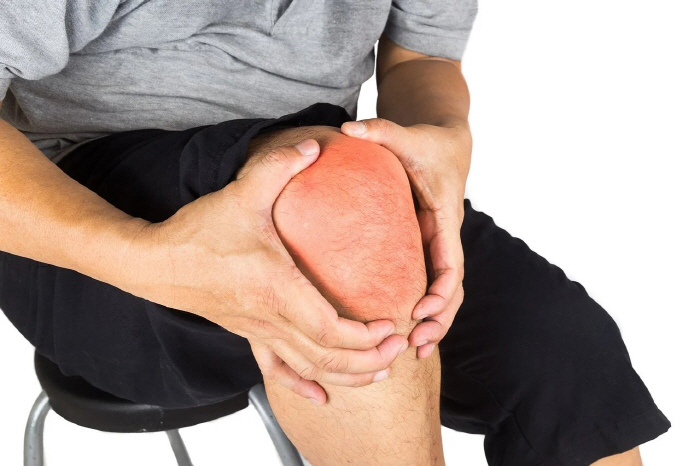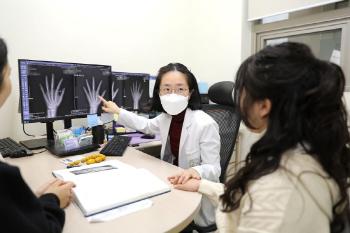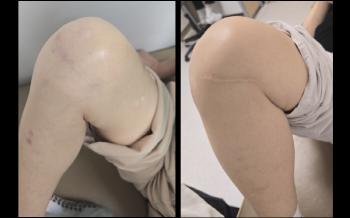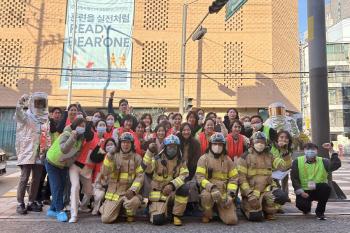Knee arthritis, depression...What lifestyle habits should I avoid?
|
The most obvious symptom of knee arthritis is pain. In the early stages, pain appears only during walking or activities, but if it progresses, it persists during rest and in severe cases causes sleep disorders. In addition, the knee is swollen, the exudate is full in the joint, and a fricative sound can be heard when moving. Over time, joint deformation and O-shaped deformation of the lower extremities affect walking patterns. In particular, when the temperature is low or rainy, muscles and ligaments around the joint contract and the pain is often worsened.
Knee arthritis is not just a pain condition. Reducing activities due to pain weakens muscle strength, and it is accompanied by weight gain, physical strength loss, and even depression, which greatly reduces the quality of life. Therefore, proper exercise is key to managing knee arthritis. Regular exercise strengthens the muscles around the joints to protect the joints, and improves flexibility and cardiopulmonary function, which has a positive effect on whole-body health.
Professor Heo Joon-young of orthopedic surgery at the Catholic University of Korea's Incheon St. Mary's Hospital emphasized that "Knee arthritis is a disease that gradually worsens over time, so it is most important to detect it early and start proper treatment.".
The diagnosis is mainly X-ray, which evaluates the degree of joint spacing and bone deformation. If necessary, a precise diagnosis is made through MRI, arthroscopy, and nuclear medicine.
Treatment depends on disease stage and patient characteristics. In the early stages (1st and 2nd stages), it is a principle to slow down the progress by combining medication, physical therapy, injection therapy, and lifestyle improvement. Symptoms can be relieved with anti-inflammatory analgesics, pain control through muscle relaxants, intra-articular viscoelastic substances (hyaluronic acid) or steroid injections. Physical therapy and exercise therapy help strengthen muscles and maintain function.
In the progressive stage (3rd to 4th stages), there is a limit to conservative treatment alone, so surgical treatment is required. In the case of local damage, the joint load is distributed through arthroscopic surgery or corrective osteotomy, and in the case of severe joint damage, artificial joint replacement is necessary. In recent years, the pace of recovery has accelerated due to advances in surgical techniques and artificial joint materials, and the lifespan of artificial joints has been extended to more than 20 years, increasing patient satisfaction.
Professor Heo Jun-young said, "Knee arthroplasty determines the optimal cutting range and implant position by comprehensively considering the patient's lower extremity alignment, joint damage degree, age and activity level"Customized surgery reflects the anatomical characteristics of individual patients, which can be expected to reduce pain after surgery, restore rapid function, and even long-term stability of artificial joints" he explained.
The most important thing in managing knee arthritis is lifelong self-care. It is necessary to maintain an appropriate weight and avoid lifestyle habits that put a strain on the knee, such as squatting, lifting heavy objects, and driving for a long time. Exercise is essential, but it is desirable to refrain from radical hiking, long-distance jogging, and to steadily practice low-impact exercises such as walking, indoor cycling, swimming, and aquarobics. Also, it is helpful to make a habit of simple muscle exercises such as stretching knees and lifting legs at home.
Professor Heo Jun-young said, `Kneel arthritis is a common disease that anyone can suffer from, but early diagnosis, treatment, and lifestyle management can slow progress and control symptoms"The most obvious prevention method is to have the right self-care habit rather than fear the patient himself/herself."
|
This article was translated by Naver AI translator.





